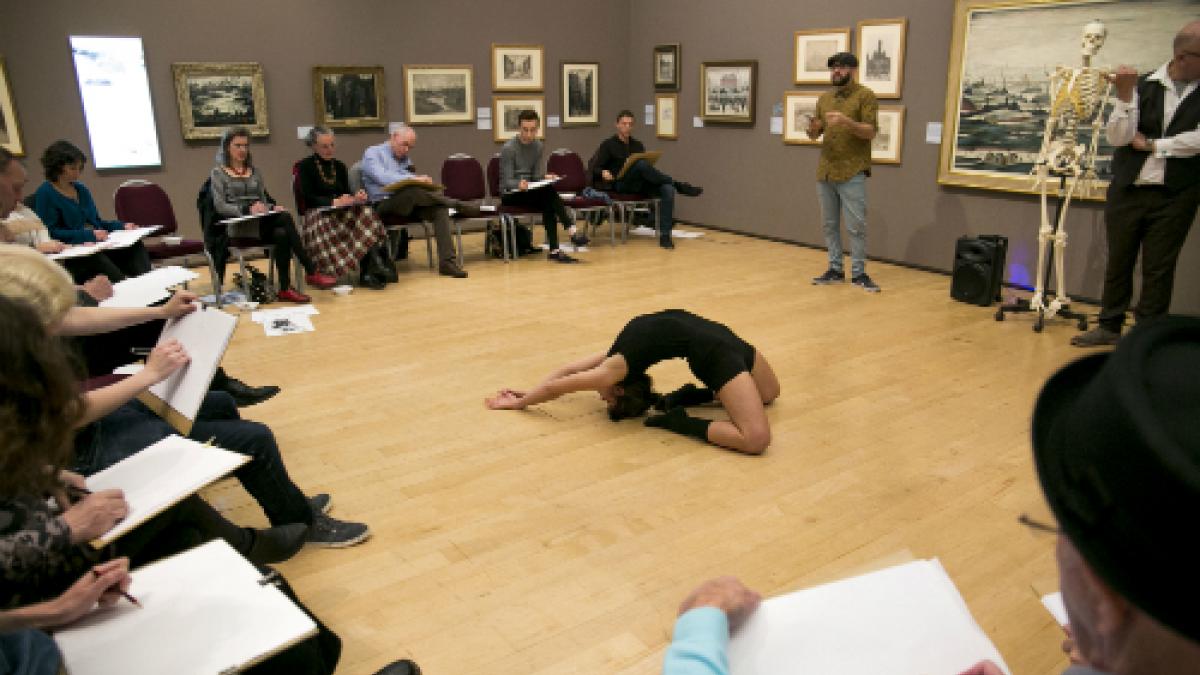Anatomy, physiotherapy, contemporary dance and drawing combined in a unique public event in the world-renowned Lowry Gallery as part of Manchester Science Festival last month.

The class offered insights in anatomy and movement
University of Salford Physiotherapy lecturer Stuart Porter and two undergraduate students, Sofia Gaspari and Gabriella Farrell, provided an anatomical perspective to a life drawing class on the human body and the way that it moves – with a world-class dancer as the subject.
As part of ‘Under Glass’ a collaboration with Dan Whiteston, an artist and teacher, and professional dancer Alice Bonazzi, they offered insights on anatomy in movement as members of the public tried to capture her on paper.
‘We didn’t really know what to expect, but we had such a great day and everyone got something out of it,’ Dr Porter told Frontline.
‘The day certainly reinforced my long held belief that there is art in science and vice versa and they are not mutually exclusive. This was a wonderful opportunity to engage with the public in a practical and scientific way, in beautiful surroundings with internationally renowned artists.’
Viewing the bigger picture
Dr Porter said that physiotherapists are trained to examine movement and movement patterns, which forms a crucial part of undergraduate training and assessments. ‘However, this event was an amazing opportunity to see a professional dancer do things in real time that required extremely complex balance power and strength activities,’ he said.
‘We thoroughly enjoyed the day and what was particularly interesting was to listen to Dan, the art teacher, describe how the artists should literally look at the bigger picture of movement and posture rather than focusing on individual body parts.
‘This is particularly interesting to us as physiotherapy lecturers since this is one of the things that we try to instil in our undergraduates. In other words, that a problem in one part of the body may be have its origin in an anomaly in another.’
Number of subscribers: 0



































